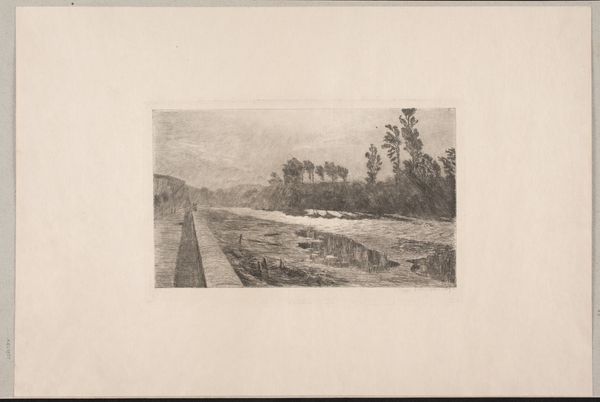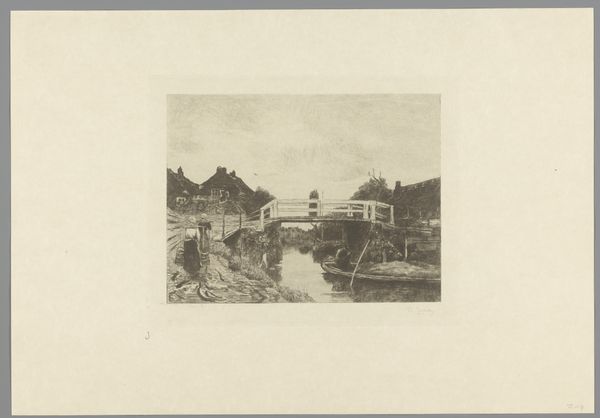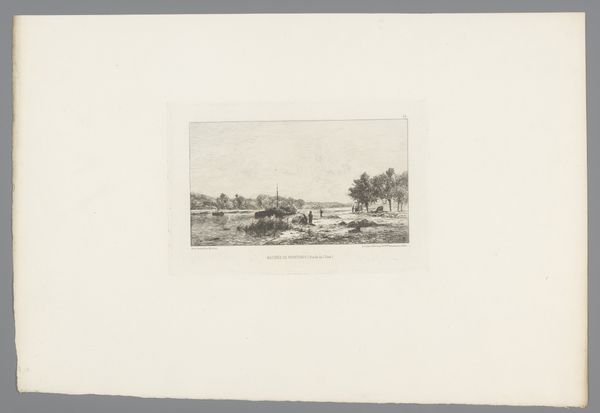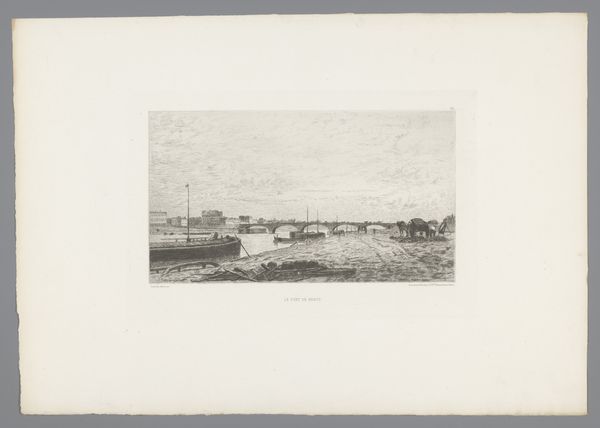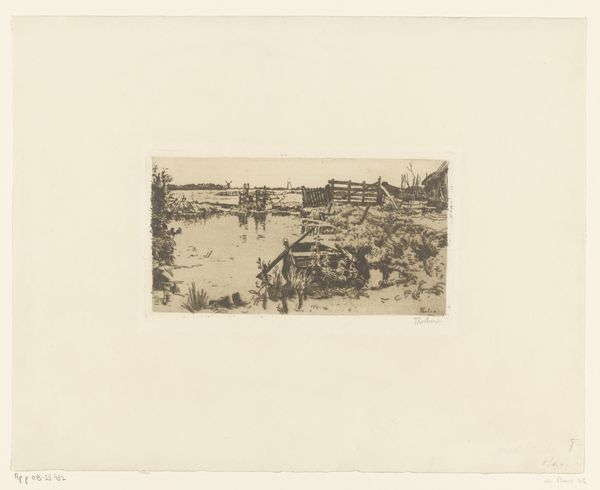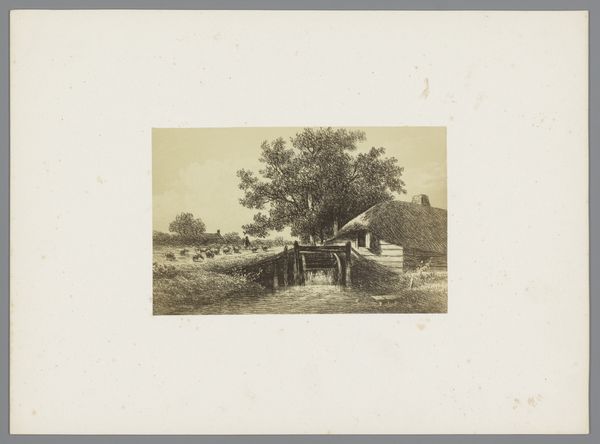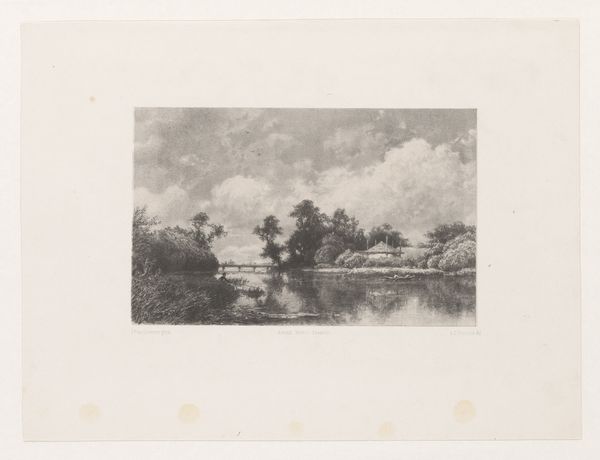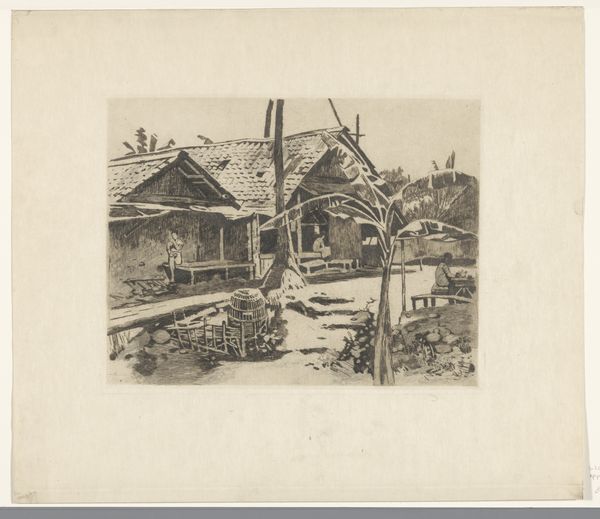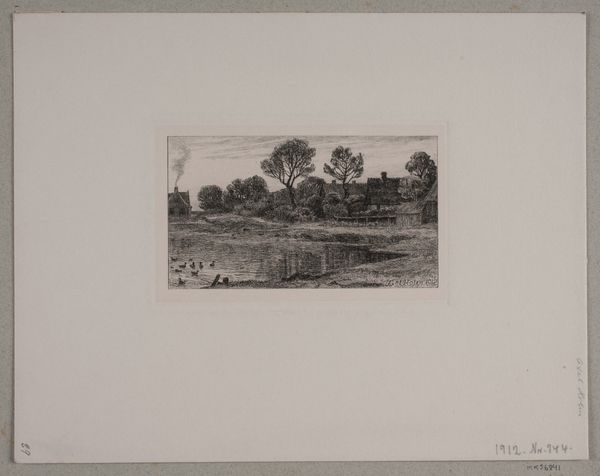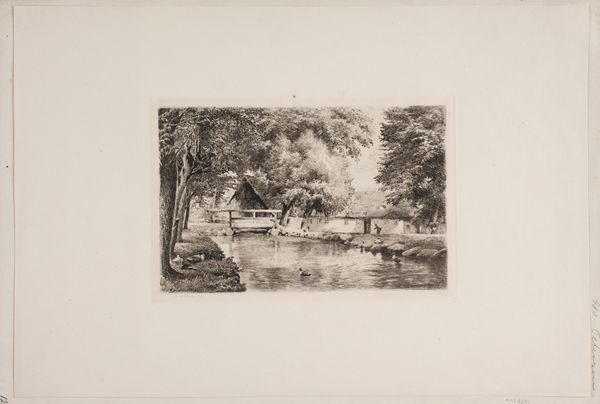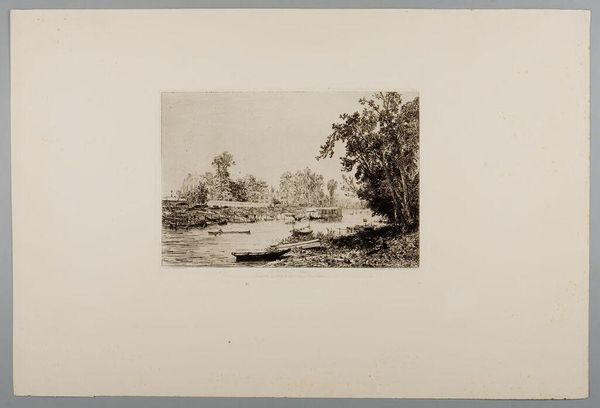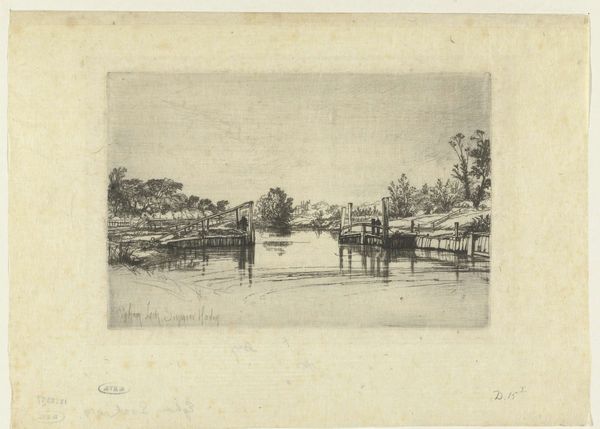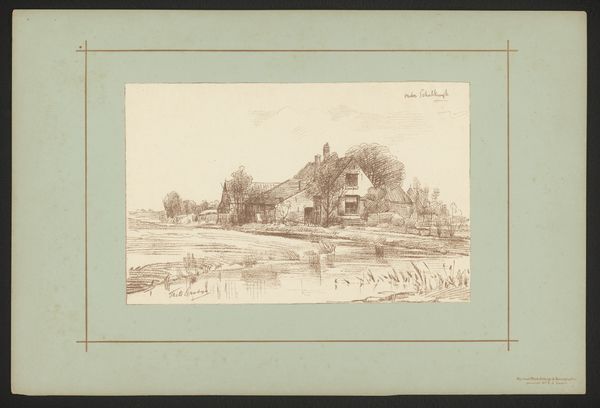
Dimensions: height 179 mm, width 260 mm
Copyright: Rijks Museum: Open Domain
Editor: So, this is "Moestuin bij Ewijkshoeve," a print made sometime between 1870 and 1931 by Willem Bastiaan Tholen. It looks like an etching. There's a quietness to it, a focus on the everyday. What do you see in this work, beyond just a garden? Curator: What immediately strikes me is the potential dialogue here between labor and leisure, tradition and modernity. Think about the context: this piece emerges during a period of significant social upheaval and the rise of industrialization. What might Tholen be saying about the value of agricultural work versus the allure of urban life through this almost romantic depiction? Editor: That’s a perspective I hadn’t considered. I was mainly drawn to the aesthetic of the scene – the balance between light and shadow, the textures created by the etching. Are you suggesting there's a subtle commentary woven into that aesthetic? Curator: Absolutely. The choice to depict a garden, a site of sustenance and perhaps even resistance to the changing landscape, can be read as a political statement, even a nostalgic one. Look at how the print’s detailed lines contrast with the blurring effects of Impressionism – a challenge to artistic conventions and the establishment’s status quo. How does that reading affect your initial interpretation of "quietness"? Editor: It definitely complicates it. The quietness now feels… intentional. It's like the garden is quietly persevering, a small act of defiance. I now notice that there seem to be farm workers, suggesting more than simply aesthetic intent. Curator: Exactly! It allows us to engage with questions of sustainability, labor practices, and the relationship between humans and the environment. It shows us a possible intersection between an artistic object, its place within history, and an ever-growing conversation between labor and sustenance. Editor: I appreciate you shifting my gaze. I realize how limiting it can be to consider artworks solely through the lens of their aesthetic qualities without acknowledging their complex ties to historical and societal circumstances. Curator: Indeed. By acknowledging its historical context and considering these artworks through an activist lens, they encourage richer engagement with narratives of culture and power.
Comments
No comments
Be the first to comment and join the conversation on the ultimate creative platform.
